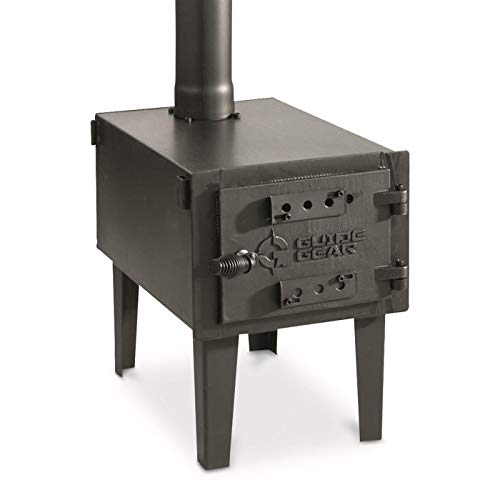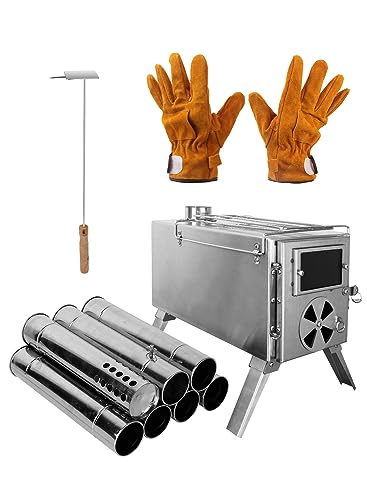5 Laws That Can Help Those In Wood Burning Stoves Industry
페이지 정보
작성자 Pearlene 작성일24-08-11 00:24 조회174회 댓글0건본문
 Wood Burning Stoves Near Me
Wood Burning Stoves Near MeWood stoves are a stunning and efficient method to heat your home. However, there are several things to consider when purchasing an appliance. They include EPA-certified energy efficiency, price and maintenance requirements.
 Avoid becoming "number-bound" and basing your decision on a certain rating or BTU output. You should also take into account aesthetics, suggestions from an established retailer, and customer feedback.
Avoid becoming "number-bound" and basing your decision on a certain rating or BTU output. You should also take into account aesthetics, suggestions from an established retailer, and customer feedback.Cost
Wood stoves can provide an elegant, stylish look to any house. They are available in a range of styles and colors that can be matched to any decor. They are a great alternative to expensive heating systems. They are also energy efficient and cost-effective. There are several aspects to take into consideration before buying the latest wood-burning stove. Included in this are the initial price along with installation costs, as well as any additional costs, like chimney liners.
The cost of the stove is determined by the type and size that you pick. You might be able to purchase an open-air wood burner priced under 700 dollars. This stove comes with an enormous viewing window which is kept clean by an airwash system that is powerful. It also has multi-fuel capabilities, meaning you can burn a variety of fuels.
Noncatalytic wood stoves are less expensive than catalytic ones, but they can be more difficult to ignite. They also require more fuel in order to generate the same amount of heat. They can also release a greater amount of particulate matter than catalytic models. Despite these disadvantages however, the noncatalytic stove can be an excellent choice for a lot of customers.
Pellet stoves are another popular alternative to traditional Wood Burning stoves for Sheds burning stoves. They work in a similar manner, but they use smaller pellets of wood or recycled materials to generate the fire and warmth. They are less maintenance-intensive than wood stoves, but they don't provide the same amount of heat.
You'll need to think about the cost of installing an exhaust system when choosing wood or pellet stove. Certain stoves for wood require an outside combustion air intake as well as a venting system that connects to chimney. Based on the location you live in and the building codes of your area, you may require getting your stove approved by an inspector from your local building department.
Installing a wood stove inside an existing fireplace will cost less. You'll have to install a chimney liner, and you may need to hire someone to clean the chimney regularly. Additionally, a freestanding wood stove cannot be able to reach all rooms of an apartment with multiple floors, so you will need to install radiators in other rooms to add the heat.
Energy Efficiency
Many homeowners are seeking alternatives to traditional heating systems since the cost of electricity as well as natural gas is increasing. Wood stoves are among the most sought-after alternatives to traditional heating systems due to the fact that they are a cost-effective and environmentally sustainable source of heat. They also burn cleaner, reducing the amount of air pollution.
Modern wood burning stoves are incredibly efficient in terms of energy efficiency, meaning they generate more heat for your home with less fuel. This is due in part to the fact that modern wood burning stoves have smaller combustion chambers as compared to older models. They also utilize catalytic combustor, which helps to burn fuel more efficiently. They also emit less harmful pollutants, which can be important for those living in an area where stricter standards for air quality are required.
Another way that log burners are greener than traditional open fires is that they permit you to regulate the amount of air fed to the fire to allow it to burn at less temperature for a longer time. This reduces the amount of smoke that is produced by the fireplace, and will also stop the buildup flammable creosote inside your chimney.
Burning a variety of different kinds of wood, such as scrap and reclaimed wood, will result in a more efficient fuel mix, which will decrease the amount of waste gases produced by the fire. You can even collect unwanted timber that has been taken from construction projects and burn it on your stove. By doing this you can cut down on the cost of buying firewood, and also help save our forests.
As a renewable resource wood is a carbon neutral fuel source. The trees absorb carbon dioxide as they expand and release it upon burning, creating the cycle of life. Additionally, by sourcing local wood, you can support the local economy and reduce your environmental footprint.
Another benefit of having a wood-burning stove is that it can provide an alternative source of heat in case of power failure. If you are able to store enough logs and wood, you'll be able to keep your home warm for a number of days. You can also make use of your stove to heat water or cook food.
Environmental Impact
Depending on the wood used and the speed at which it is burned, using wood stoves can cause negative health and environmental consequences. The burning of wood burning stove modern releases dangerous gases, such as carbon monoxide and nitrogen oxides, along with fine particulates, referred to as PM (particulate matter). PM (particulate matter) is a mix of harmful substances such as black carbon, soot, and tar. These substances are known to cause number of health issues like heart disease and asthma.
The carbon dioxide emissions released from wood-burning stoves contribute to global warming that negatively impacts the environment and the health of humans. Wood burning can also release volatile organic compounds (VOCs), one of the major sources of VOCs in indoor environments. VOCs are a kind of pollutant that has been linked Ultra-light Titanium Camp Stove: Portable with Chimney a range of health issues, such as eye irritation and headaches.
VOCs are created by the incomplete combustion of wood and can harm the lungs, respiratory tract, and circulatory system. They also contribute to a variety of environmental problems that include the loss of biodiversity as well as water quality issues and soil erosion. In some regions where the levels of VOCs in wood smoke can exceed federally-enforceable standards.
According to a report from Undark five states have offered incentives to replace older wood-burning stoves by EPA-certified models. However, a majority of these appliances only offer slight improvements over the previous models. They're also expensive and require electricity to power the controls, fans and pellet feeders.
As a result, some environmental organizations are beginning to eliminate incentives to promote new wood stoves, and instead focus on enticing people to switch to alternative heating sources. The State of Oregon, for instance, requires homeowners to remove uncertified wood-burning stoves and encourages them to change to heat pumps.
Wood stoves are more energy efficient compared to other heating methods, such as gas or electric furnaces. These stoves produce more heat with less wood than their electric or gas counterparts, making them a cost-effective and sustainable option for home heating. However, they should be maintained and inspected regularly to reduce the amount fuel needed and improve efficiency. By removing the feed system and hoppers at the end of the season you can reduce the risk of rust and ensure that the stove will be ready to be used in the fall. Regularly cleaning the chimney vent on your stove can also stop the buildup of flammable materials.
Safety
Wood burning stoves provide a warm and cozy option for heating, but they also present dangers to fire that could threaten your family's health. Smoke inhalation can be a cause of fire, carbon monoxide poisoning, and other serious issues. You can safeguard your family and home by taking the appropriate safety precautions.
Make sure your stove is installed and vented properly. A certified professional should put in the chimney flue pipe, the chimney connectors and flue pipe. The chimney should be at least three feet above any objects which could cause fire. This includes overhanging trees or buildings adjacent to them. Install CO and smoke detectors in every bedroom, and on every level of the house. Connect them all together so that they all sound when one goes off. Replace batteries and check your alarms on a regular basis. Keep flammable substances like plastics, paper, and garbage, from the stove, and do not burn them in it or near it.
Never leave a stove that is burning wood unattended, especially overnight. If you have a wood-burning stove located in a sleeping area, turn off the heating and open the windows before going to go to bed. This will stop smoke from the wood stove from entering the room and creating CO poisoning.
If you're going to make use of a wood-burning stove, consider installing an air-cleaning system. These systems work to capture and neutralize volatile organic compounds in the exhaust stream before it leaves the fireplace. It is also important to keep your stove clean, and keep the grate and draft louvers free of debris and ash.
Wood smoke is harmful to everyone however it is particularly harmful to children and older adults who suffer from weak lungs. It can also cause respiratory illnesses and asthma. Avoid using wood stoves on days when pollution levels are high. The EPA and each state provide daily reports on air quality.
The latest wood stoves might be more efficient than older models, but they still release large amounts of pollutants into the air. Choose a model that has been certified by the EPA as being over 72 percent efficient to limit your exposure. Burn only seasoned, dry wood. This kind of wood generates more heat and has less toxic substances than fresh, green wood.
댓글목록
등록된 댓글이 없습니다.